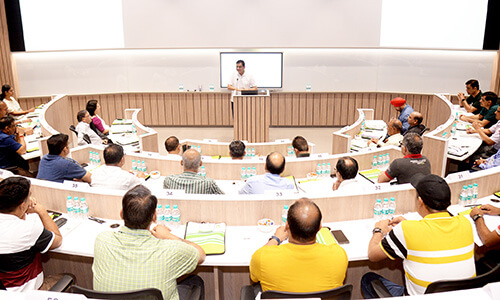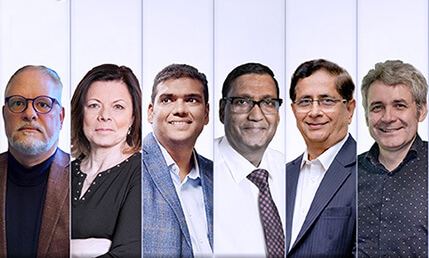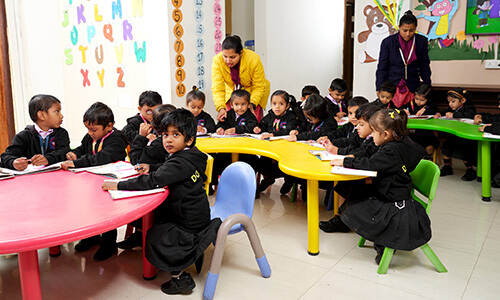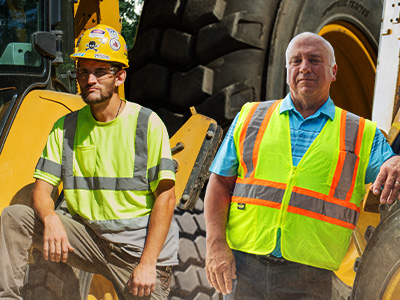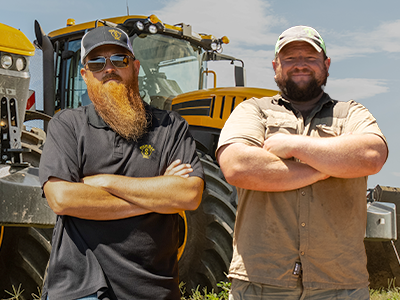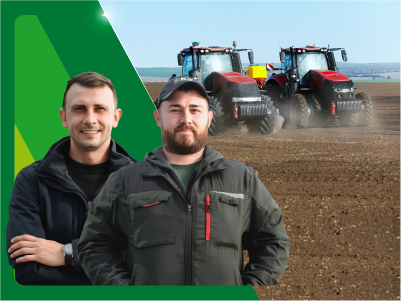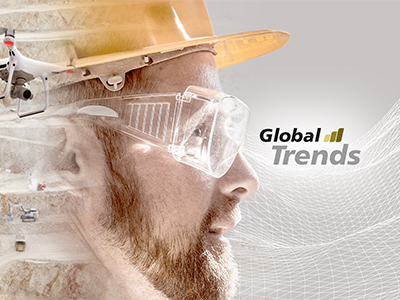And, gentlemen, it's lovely to have you back. I'm delighted that we all chose to match with a blue shirt for this topic, which is incredibly appropriate. Now, let's go to Fabio. You've been undoubtedly listening to Craig and Robert. Now is your chance to join in the discussion as we go into our wrap-up Trends & Talks.
What I'd like to hear from each of you is this: how can companies stick to their sustainability goals and succeed in keeping all their stakeholders happy?
Fabio, let's hear from you first, and I think you're particularly interesting since your company's been working with BKT to help them implement sustainable practises. Is that right?
Yes.
Yes, Saana, that's right. And this focus is design, implementation, innovation, industrial plants. BKT has set some clear sustainability goals and most big corporations are doing the same.
And they've been working with you on, I believe, a new tyre plant, is that right?
Yes, it's a tyre camber plant production in Bhuj in India which produces off highway tires. they focus on unsuitability objectives such as packaging reduction, CO2 reduction, energy reduction and reduction inputs from fossil fuels. For example, rather than moving raw material around the plant in polypropylene bulk bags, we have implemented the use of reusable mobile silos, the result of a lot of energy expended in moving those raw material around the plant. In the last five years, we developed a new patented technology to help with energy reduction. Overall, we looked for every opportunity to reduce not just energy but energy waste. We set up a goal of 70% reduction. Key for achieving this was a technology called Eco Dense Tronic. When implemented in Bhuj, this will save more than two million tonnes of CO2 emissions every year. We have got to remember that we need to be sustainable throughout the whole chain, in extraction and processing. So, it means that when companies choose the suppliers, they need to be sure that there is the same attention and focus on sustainability.
Excellent, a great start to our discussion, Fabio, thank you. Now, Robert, do you have any client examples you can draw on here?
Yes, we have many examples. One example is when we explored alternative energy solutions at a mining operation, specifically at a processing plant. If we look at batteries, we're currently exploring remanufacturing of batteries which would typically be used for EV applications, but then used for stationary storage. We're exploring the environmental impact benefits of such activity. Another example is we've more recently been working with some major alumina producers to measure their current environmental impact and simulate scenarios to deal with waste in different ways. Specifically looking at refractory waste products and seeing how they can be input in materials for other sectors such as the cement sector.
Well, with 170 projects completed, I knew you'd be able to come up with some great examples. Thank you, Robert. Now over to you, Craig, for the final word.
Well, I think one good example would be the increasing use of trolley assist systems to replace the use of diesel haul trucks. That's having a really big impact on emissions from operations. Now I wish we had time to open up this discussion in greater detail.
I feel that there's a lot more that the three of you could add. Thank you for joining us today on Global Trends and sharing your knowledge, experience with our audience.
Craig Guthrie of Mining Magazine, Robert Pell of Minviro and Fabio Novelli of NTE. It's been a pleasure talking to you today.
If you've watched the first episode, you'll remember it's time for another interactive session. This is Quiz You Up!, the segment where we invite you, dear viewers, to engage with us. Today, we're going to put the following question to you on social media and we want you to answer it. So, first, no doubt you'll want to know the answer to last month's question, where we asked you how much faster is it potentially to obtain data using drones to inspect mining sites rather than using traditional methods. And the answer is: 20x. The use of drones for mine surveys allows for more rapid data collection across the site, nearly over 20x faster than using traditional methods carried out by personnel on the ground. So, did you get it right? I saw that there's more than a few of you who did looking at those feeds, so, congratulations to you.
So who's going to go for two out of two? Let's see about this month's question. Both Craig and Robert talked about the importance of lithium as we transition into a low carbon energy economy. So, what I'm going to ask you for this episode's Quiz You Up! is: How much does the International Energy Agency predict lithium demand will grow by 2050?
A slightly more difficult question perhaps, but don't worry, we'll give you the answer next time.
So, there you have it. Global Trends, episode 2, Sustainability.
I hope you enjoyed it. Thank you for watching. We'll see you next time when our topic will be Alternative Energies.
